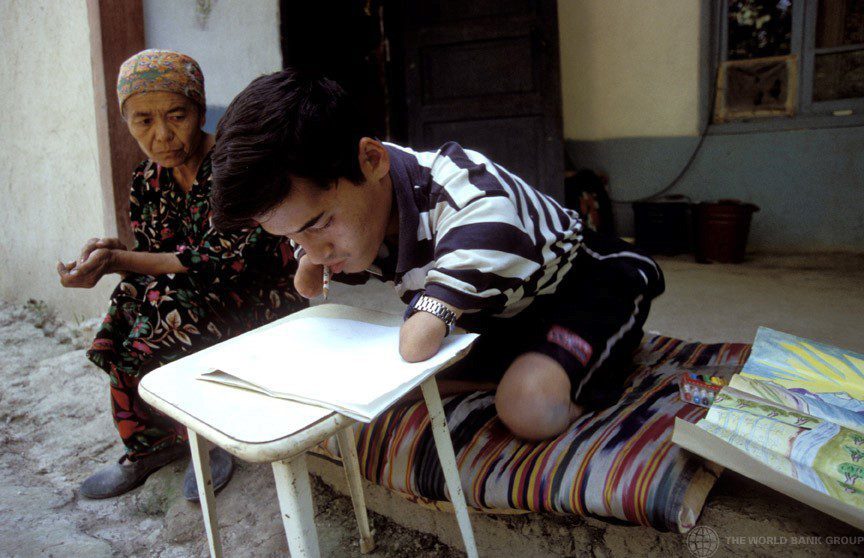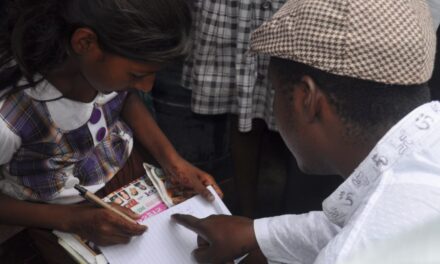This blog was written by Hanna Alasuutari, Global Thematic Lead of Inclusive Education and Education Specialist in the Education Global Practice of the World Bank. It was originally published on the World Bank Education for Global Development blog on 20 April 2020.
Learning has been disrupted for more than 1.5 billion children and youth by the coronavirus (COVID-19) pandemic. Most students around the world are out of school and using remote learning programs, through the internet, TV, or radio or combination of these, if they are available. Inequity in access to the internet, data packages, and devices to support remote continuity of education for all learners has become clearly evident, but the specific risks that this pandemic poses to marginalized students, especially students with disabilities or diverse/special educational needs are essentially sidelined.
 Those who were marginalized before the pandemic, are now even more at risk. Intersectionality with poverty, gender, ethnicity, age, disability or other identities can result in multiple forms of discrimination and exclusion. That is why efforts in health, social protection, education, and other sectors must take everyone into account when tackling the pandemic to ensure continuity of safe and inclusive services to all. Acknowledging this and taking bold action now to bridge the growing inequity and the digital divide is critical for the future.
Those who were marginalized before the pandemic, are now even more at risk. Intersectionality with poverty, gender, ethnicity, age, disability or other identities can result in multiple forms of discrimination and exclusion. That is why efforts in health, social protection, education, and other sectors must take everyone into account when tackling the pandemic to ensure continuity of safe and inclusive services to all. Acknowledging this and taking bold action now to bridge the growing inequity and the digital divide is critical for the future.
This infographic and the questions below outline what countries should pay close attention to when responding to COVID19 crisis:
- How to keep all students and communities safe?
The pandemic has forced countries and communities worldwide to close their schools. Remote learning opportunities might not be available or accessible for all students, and a variety of communication channels and methods need to be utilized, ensuring that educational content is shared in local and minority languages, including sign languages, using captions, audio provision and graphics.
School closures have led to the loss of routine and supervision. In addition, access to services like meals, support provided by resource personnel or assistive technologies are no longer there, and social and child protection services have mostly closed. At the same time, domestic violence has been on the rise. In this situation, those who are most vulnerable will suffer the most. It is important that these challenges are addressed to avoid increase in stigma and marginalization of children, girls and persons with disabilities.
Once students, teachers and other school staff return to school, it is essential that health and safety is restored with improved health and sanitation practices followed in an inclusive manner with facilities, information and communication accessible for all students and staff. Demand for socio-emotional support and counseling services is high now and will only continue to increase as the well-being of teachers and students needs to take center stage.
- How to ensure accessibility and reasonable accommodations of remote learning?
It is critical that all learners have access to a curriculum following the principles of Universal Design for Learning, with reasonable accommodations and differentiation both now and after returning to school.
The forthcoming 2020 Global Education Monitoring report, Inclusion and education: All means all, outlines that the available technology allows students with print disabilities to use online study materials in different formats like converting texts to audio or Braille characters. However, not many education systems use the available assistive, cost-effective technologies for all students, or consider resources such as Bookshare and the Global Digital Library, which can support students with print disabilities or provide a checklist when planning educational services for learners using sign-language.
A few countries, such as Finland, South Africa, and the United Kingdom, have considered learners with disabilities or diverse/special educational needs in their COVID19 response, ensuring that some support services are available during the crisis. The pandemic presents an opportunity to ensure that remote learning is accessible for all and that some more individualized support is available. This will be helpful in future crisis situations and in efforts to address the needs of those who are at risk of not returning to school after they re-open.
- How to support parents in engaging with their children, including children with disabilities?
It is critical to engage parents’ and caregivers’ engagement in provision of remote learning. Structure helps but can be difficult to follow when parents and caregivers juggle multiple responsibilities at home. Parents and caregivers of students with disabilities and diverse learning needs may struggle even more and need support and resources to help their children learn. Many parents look for support from teachers, while some may rely on their communities when support services provided at school are no longer available. The crisis creates opportunities for parents and school staff to collaborate more to ensure the well-being and learning of all students going forward.
- How to ensure that teachers support learning of all students?
Education systems need to keep teachers and school leadership engaged and working during the COVID-19 crisis to ensure continuity of education services. Teachers play an essential role in inclusive education, and it is important that they learn about inclusive pedagogy. There will always be students who need more intensive or individualized support. Hence it is important to educate some teachers so they become experts in these more individualized approaches and can provide effective support to other teachers and learners within general education classrooms. This resource staff or special education teachers will play a critical role going forward supporting other teachers after the crisis.
In countries where formal training for teachers and other services and resources are scarce, there may be other resources — like community members, parents, caregivers, or non-governmental organizations — who could become partners in supporting inclusive education.
Responding to the COVID-19 crisis and recovering from it calls for an inclusive approach, which takes care of all learners, inclusive of children and youth with disabilities and other marginalized learners. Emerging with more inclusive education systems can support all learners in getting back on track both now and after the crisis.




